Visiting Hagia Sophia
One of the few tourist attractions that I felt compelled to complete a pilgrimage to in Istanbul was Hagia Sophia. Originally built in 537 AD, it is one of the greatest surviving examples of Byzantine architecture and has had three different uses: a Greek Orthodox church, an Ottoman mosque, and a museum about itself. The evolution of its architecture to adapt to these distinct purposes intrigues its visitors, and the speed at which it was built awes even the casual passersby.
Google Maps is not always intelligent: when I looked up directions to Hagia Sophia, I was directed to its far side, but that’s where the tombs are. You can enter the tombs for free, and it was nice to see one of them. But since I was really there to see the museum, I asked a security guard manning the tombs where I should go. The entrance is on the southwest corner of the property, which was much closer to where I walked from.
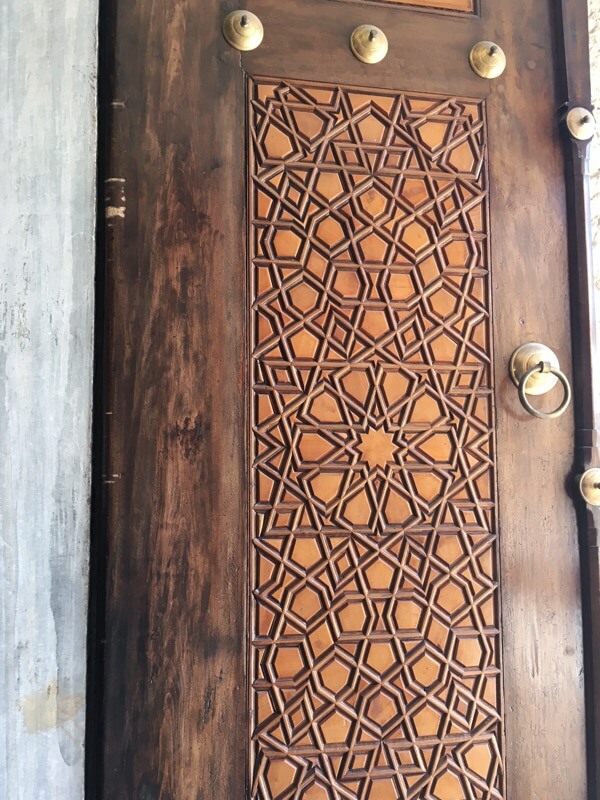
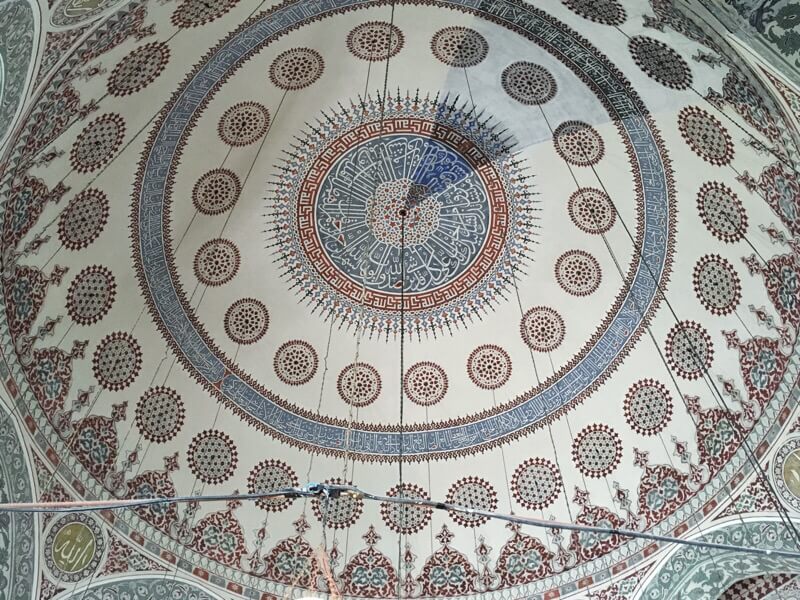
A private tour guide tried to get me to hire him at the entrance, but I dismissed him after I realized what he was trying to do. The line to buy tickets was not too bad, but processing the people in front of me took forever even though they had a museum card. So much for being the fast track. I paid ₺40 for my ticket and skipped renting an audio guide since it was almost the same price as the ticket (₺30).
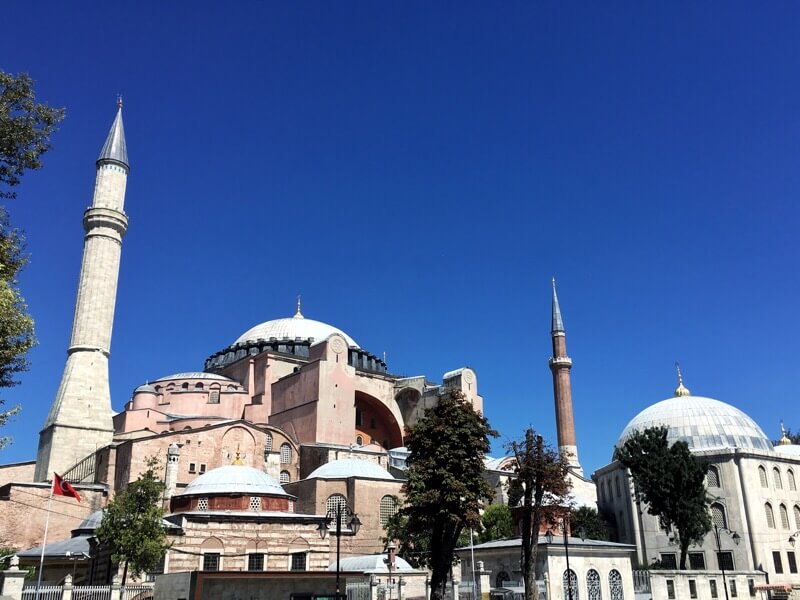
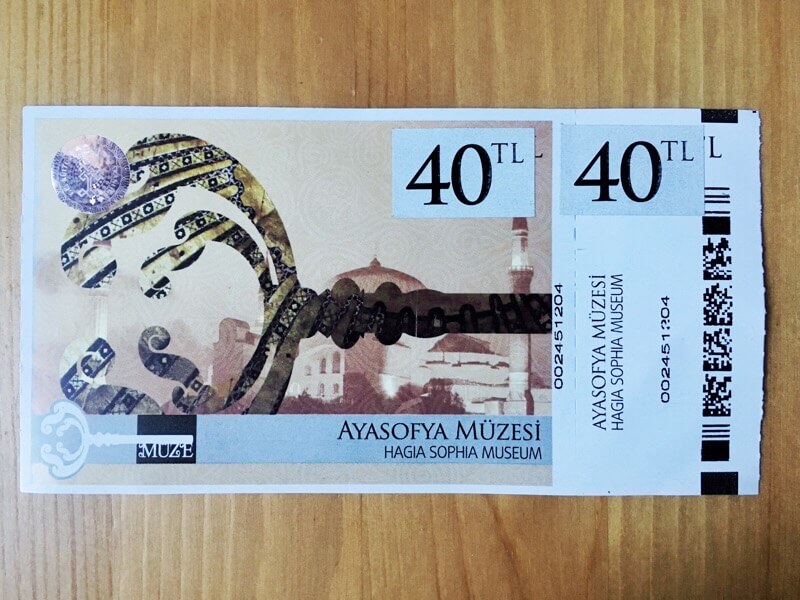
When you first walk onto the grounds, an outdoor restaurant and gift shop are on your left, but all around them are excavated artifacts from the first and second iterations of Hagia Sophia. There’s a video you can watch inside at the end of the first hallway that explains many details about what you see in and around Hagia Sophia. A series of explanatory posters on the wall also cover the history of the enormous building.
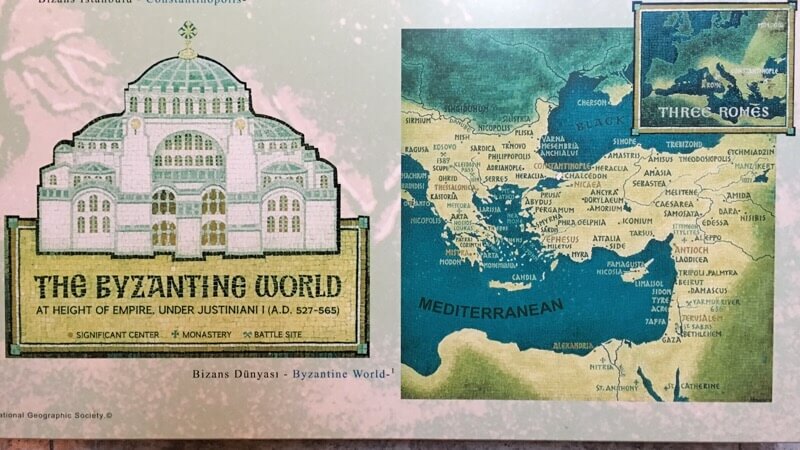
The second hallway has golden mosaics covering the ceiling. After that is the large hall where you can find the main attractions, including a reading room separated by a gold screen and ancient tiles that somehow survived the years.
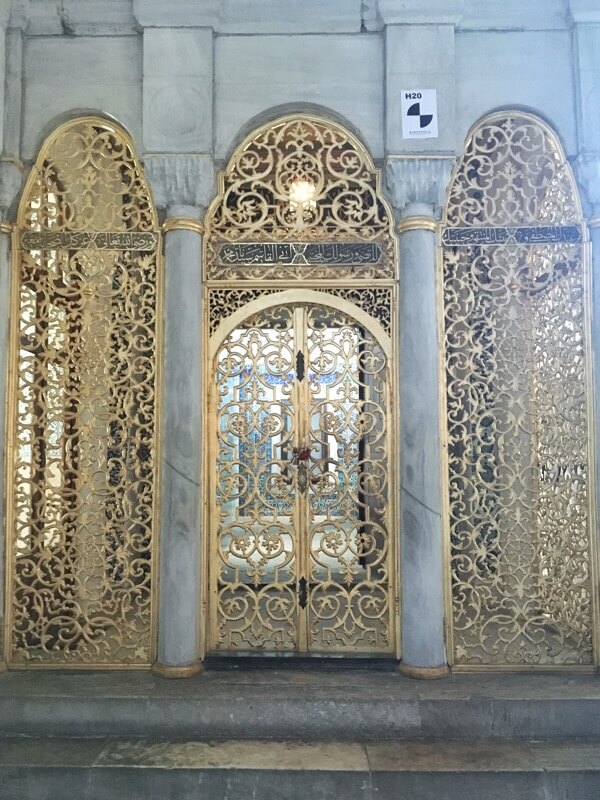
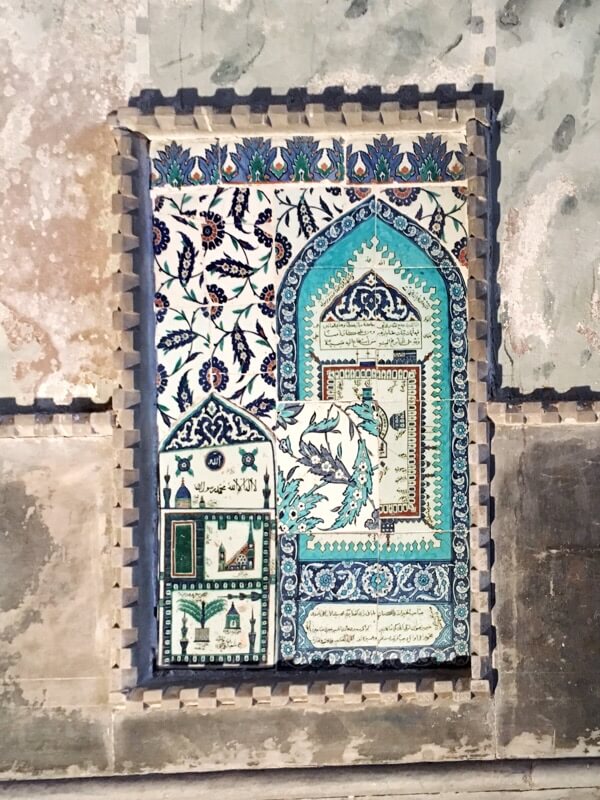
The lower ceilings are primarily yellow with different geometric designs.
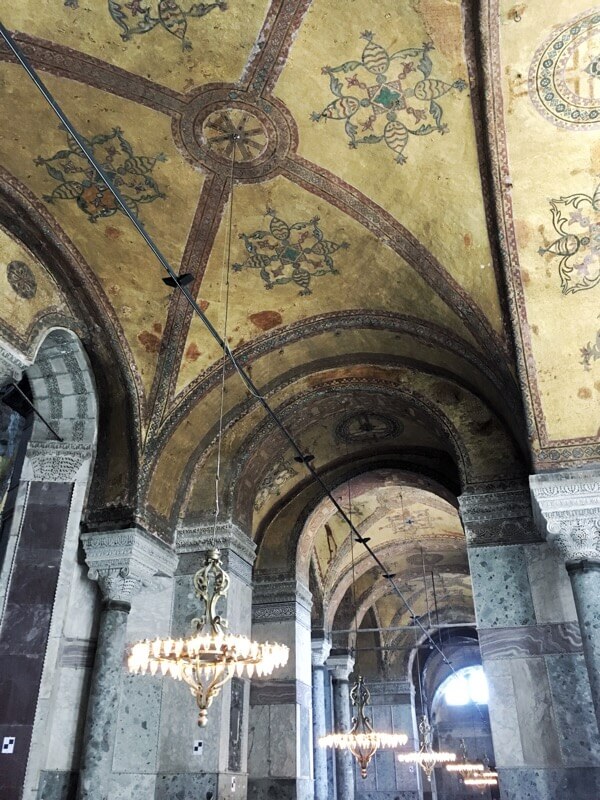
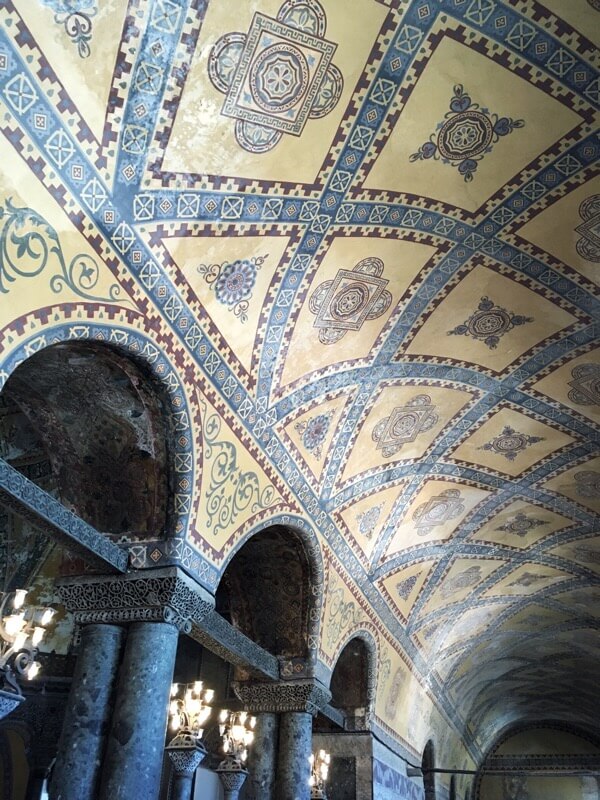
One of the interesting features after you wind your way upstairs via a seemingly never-ending ramp is a marble door.
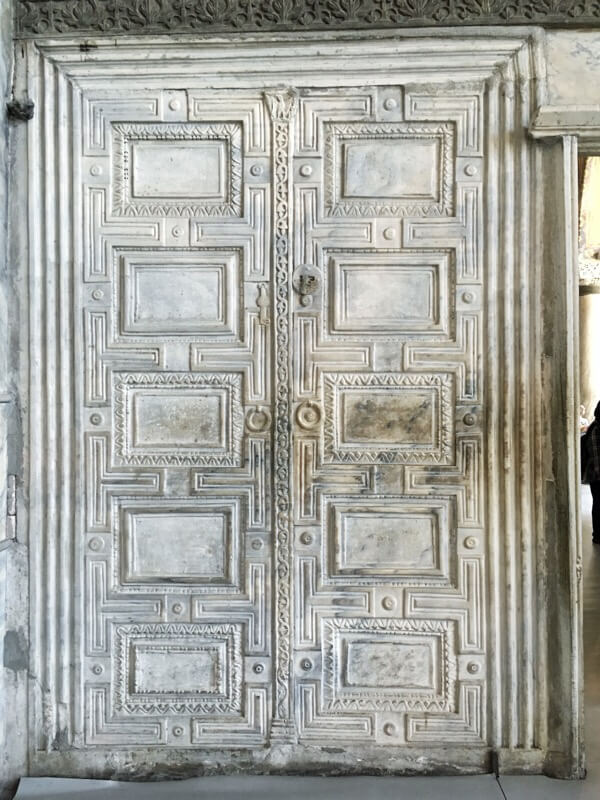
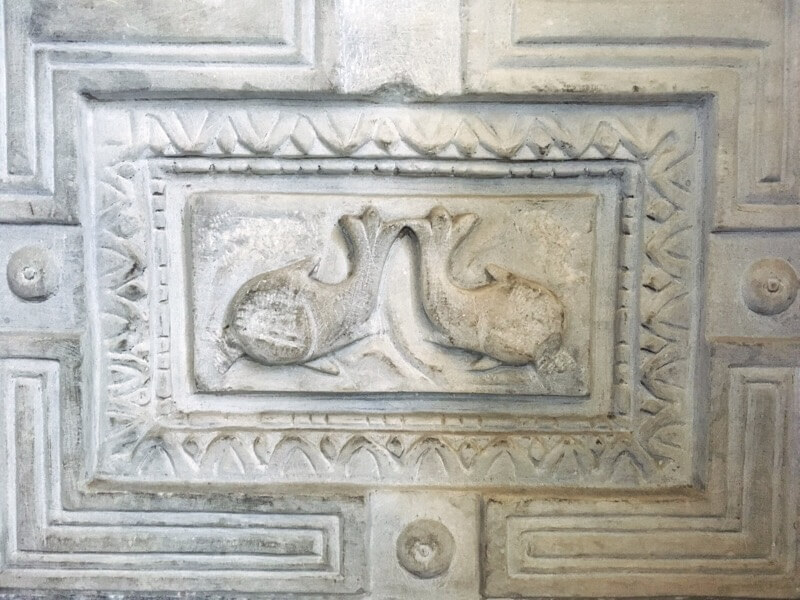
The high ceilings in the main hall are fascinating: this is where most religious activities were held, and it is decorated with both original Orthodox artwork and Muslim artifacts.
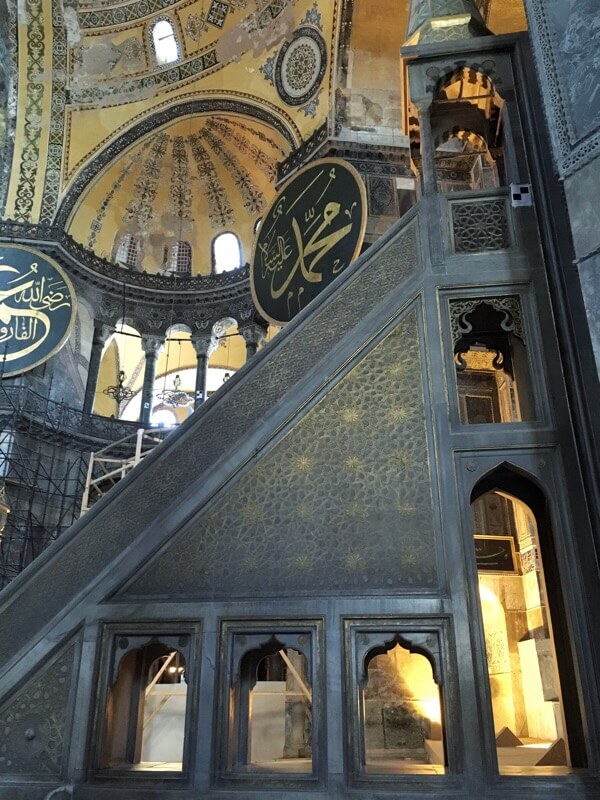
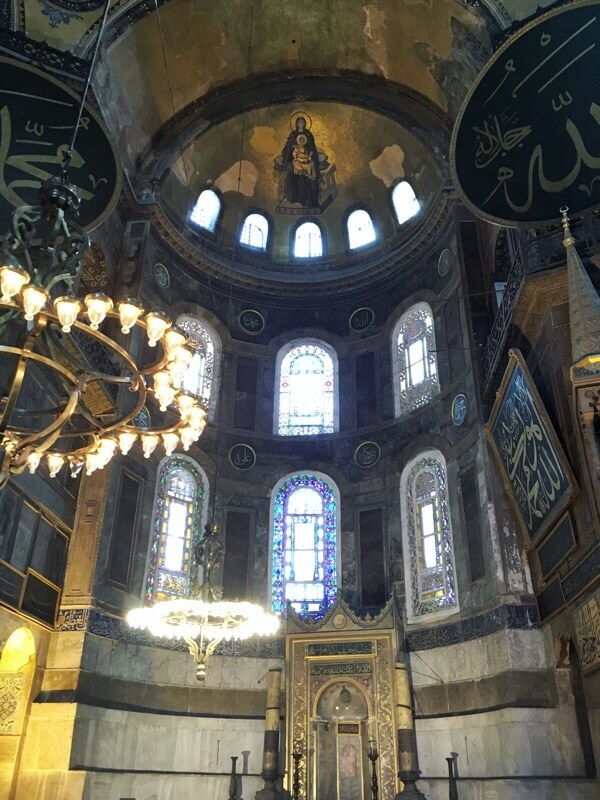
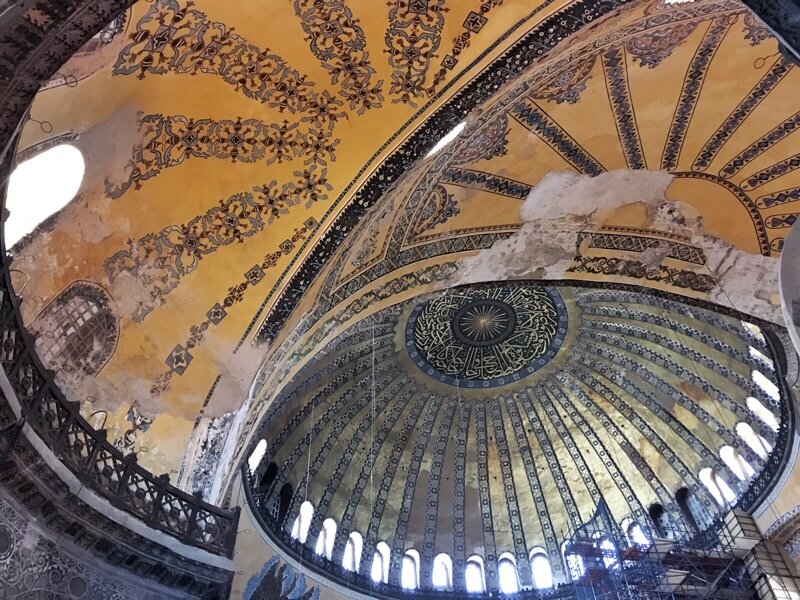
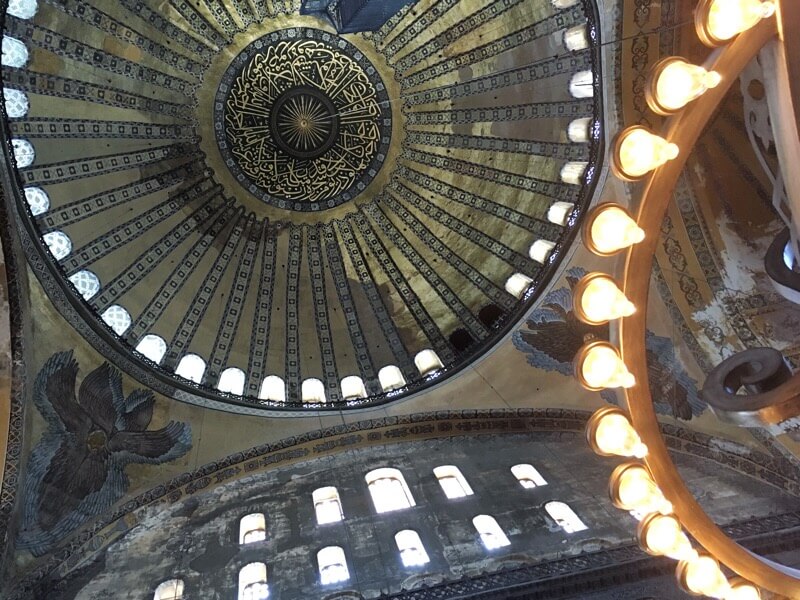
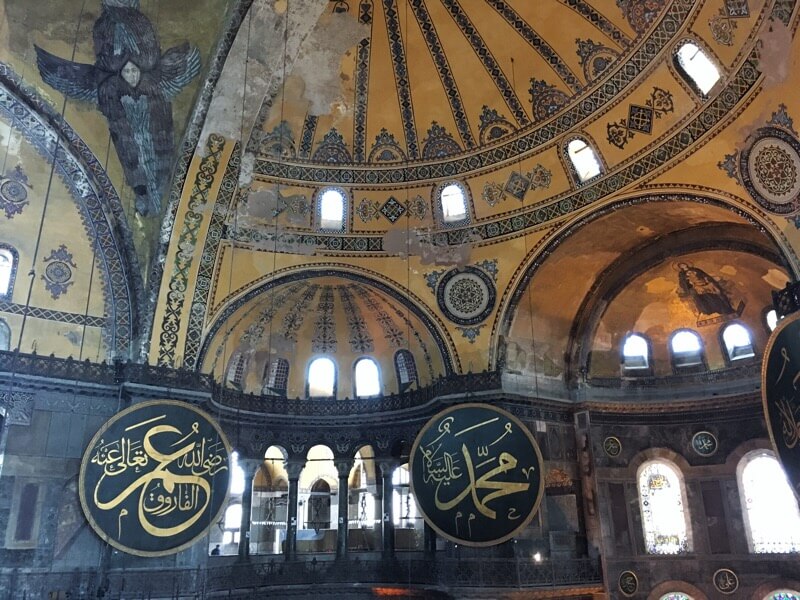
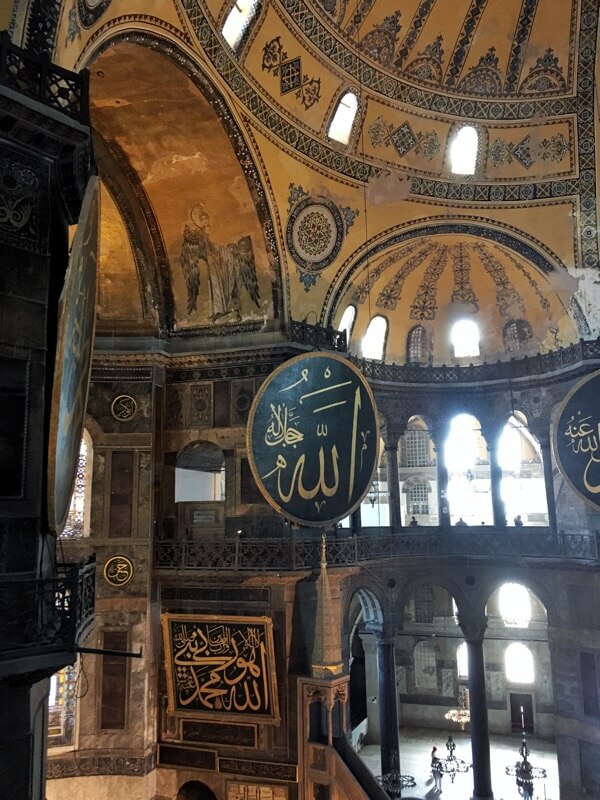
On the columns, you can see the seals of Emperor Justinian and his wife.

If you look out the second-floor windows, you get a different view of the Blue Mosque.
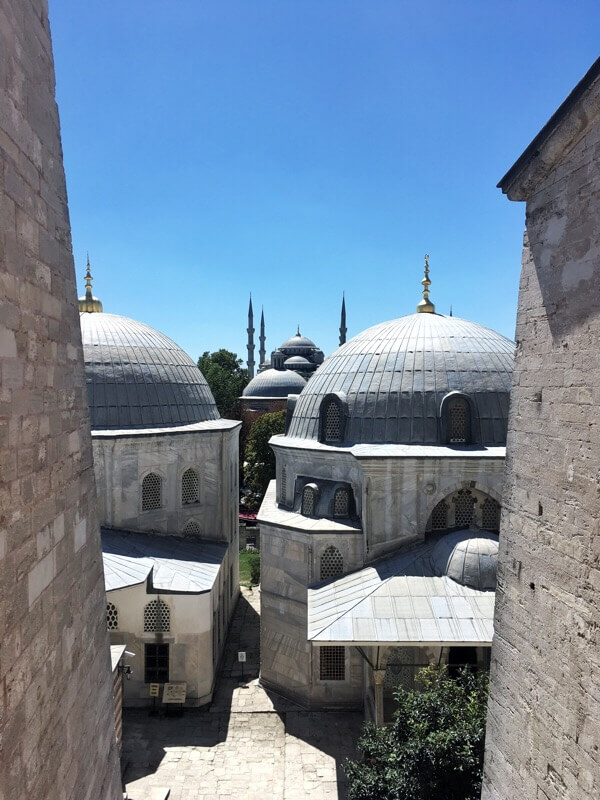
I thought this mosaic mural of Justinian and his wife giving money to Jesus quite amusing.
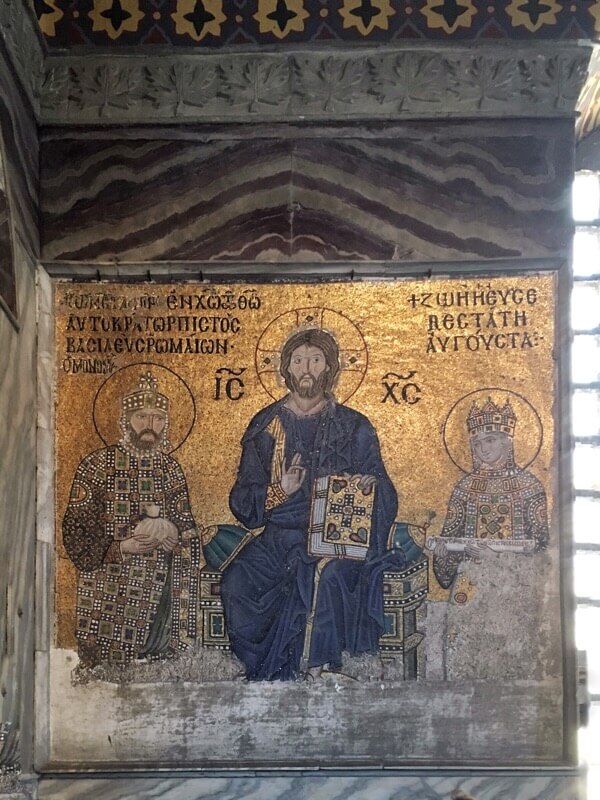
If you look carefully in the marble railings on the second floor, you’ll find some viking runes.
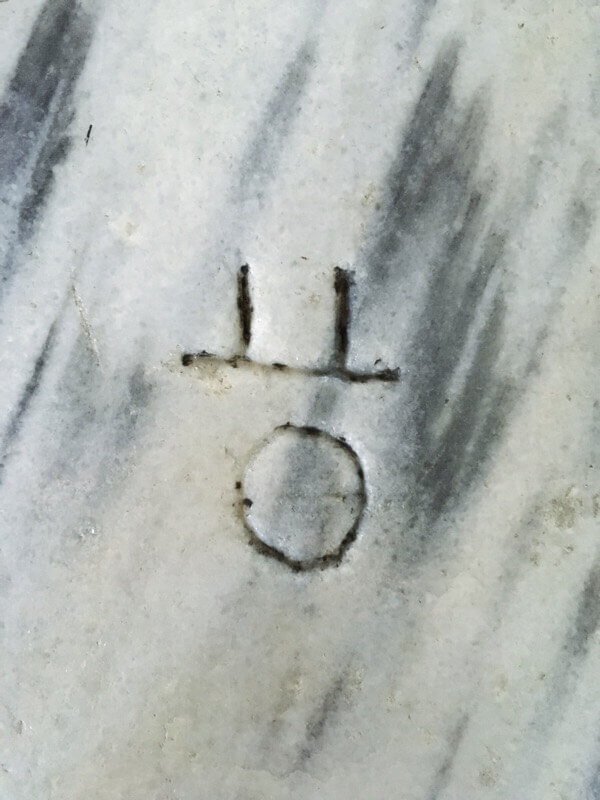
After exiting the building, make sure to take a look at the outdoor areas. Although no longer used, there is an ablution area made of mostly marble.
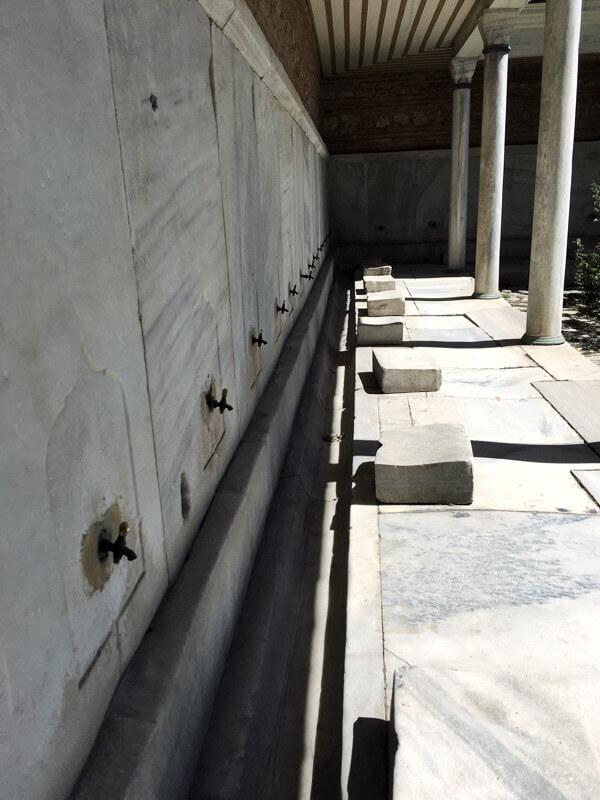
You can admire an interesting sundial with advanced features just past the ablution area.
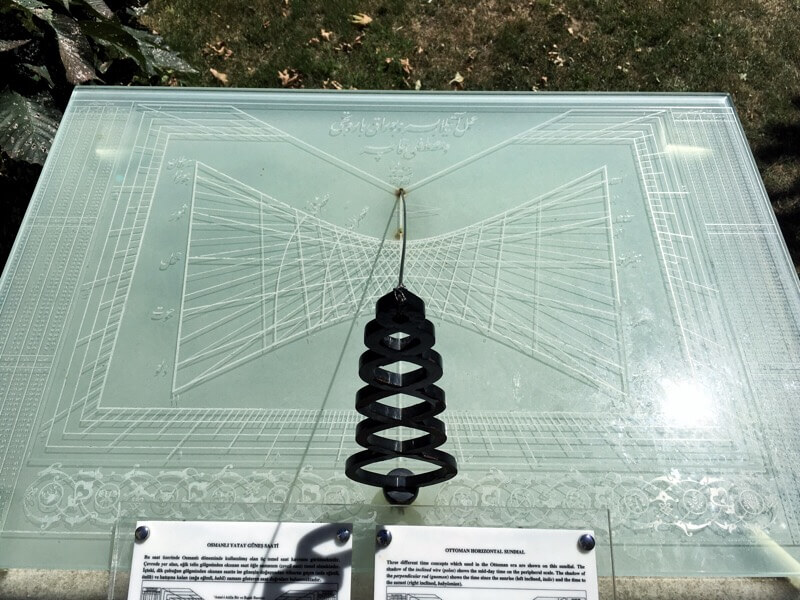
An ornate fountain (also no longer used) waits outside for you to submit to its golden charms.
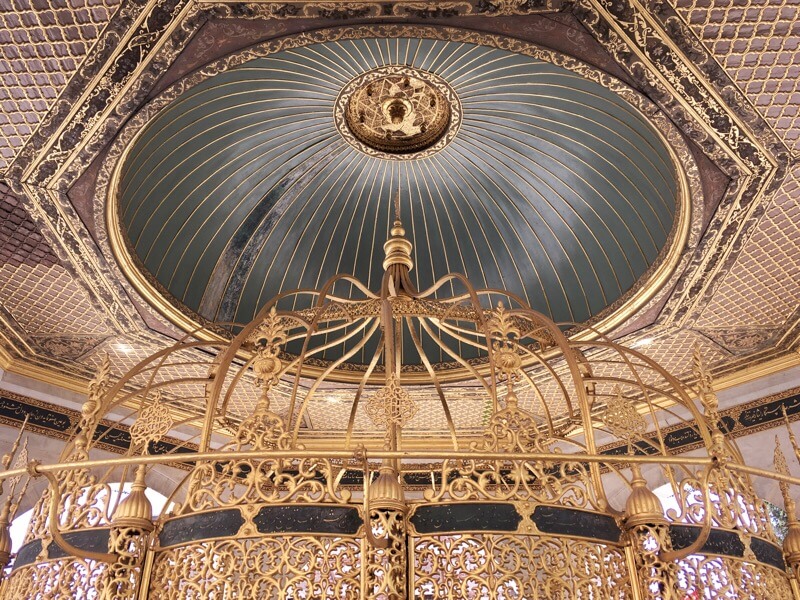
And a quote about how amazing the army to conquer Constantinople would be wraps up the tour. I can’t help but ponder its relevance to the recent military coup.

It took me about an hour to see the museum, but if you get an audio guide, it would probably take longer.